When we did out MikroTik CRS354-48P-4S+2Q+RM Review we called that 48-port PoE switch from MikroTik an “extreme value” with differentiated features such as QSFP+ 40GbE ports. After completing that review, we had several readers ask for a MikroTik CRS328-24P-4S+RM review. The CRS328-24P-4S+RM is a 24-port PoE/PoE+ switch that also has four SFP+ ports for 10GbE uplinks. In our review, we are going to see how this package compares at a sub-$399 price point (ours was around $360.)
MikroTik CRS328-24P-4S+RM Video
For those that are on the go and prefer to listen to the review rather than read it, we have a video version of this review:
Of course, we still have what is covered in the video and more in the article below.
MikroTik CRS328-24P-4S+RM Overview
The “28” in CRS328 means that there are a total of 28 ports. The rest of the model tells us that there are 24x 1GbE PoE (24P), 4x SFP+ (4S+) and that this is a rackmount form factor (RM.)
We are going to take a look at the switch from an external perspective before moving to the internal view. We are intentionally keeping this review very similar to the non-PoE version so our readers can do a comparison.
MikroTik CRS328-24P-4S+RM External Overview
The switch itself is a 1U form factor that is 300mm deep. This makes it deeper than some of the other 24-port MikroTik models we have seen, but still relatively short-depth.
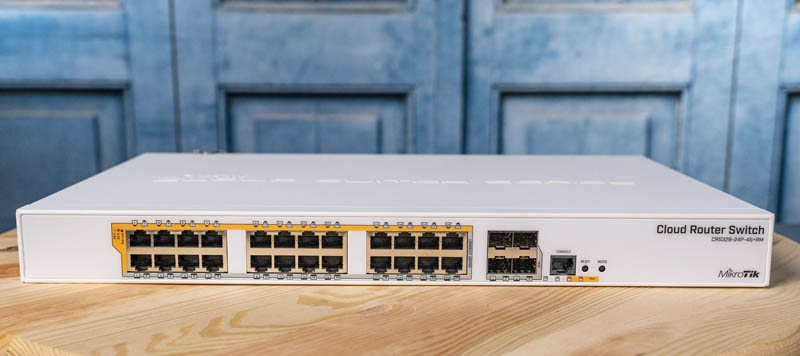
The headline feature of this switch is the 24x 1GbE and PoE enabled ports. These ports support PoE and PoE+ (802.3at/af) along with passive PoE, and low voltage PoE. This is a newer breed of PoE switches designed to handle higher-power devices so we can get up to 26-30W of power per device. While the bottom row of activity lights are traditional data activity lights, the top row of indicators lets us know if a port is providing PoE power and at what voltage range. Here is an example using Hikvision cameras. The top indicators are showing higher-voltage power being supplied.
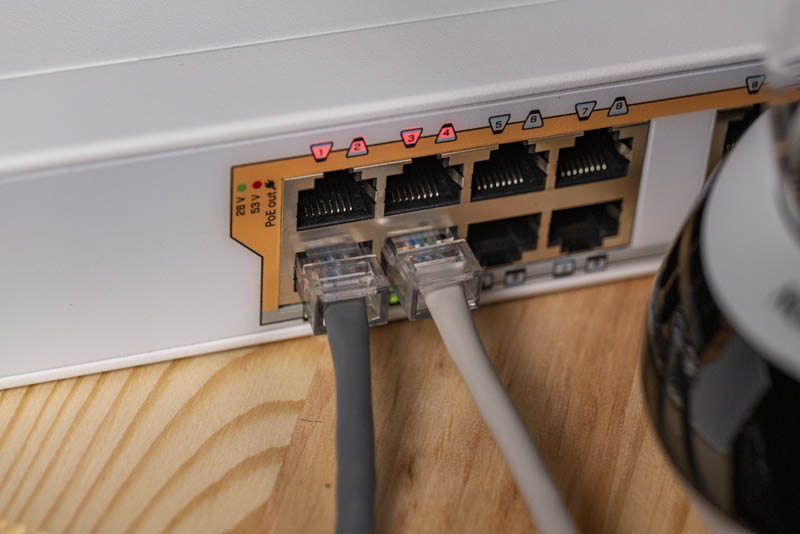
For older legacy PoE devices, this switch still has support. You can read more about PoE, PoE+, and PoE++ switches in our Key Differences of PoE vs PoE+ vs PoE++ Switches: A STH Guide piece.
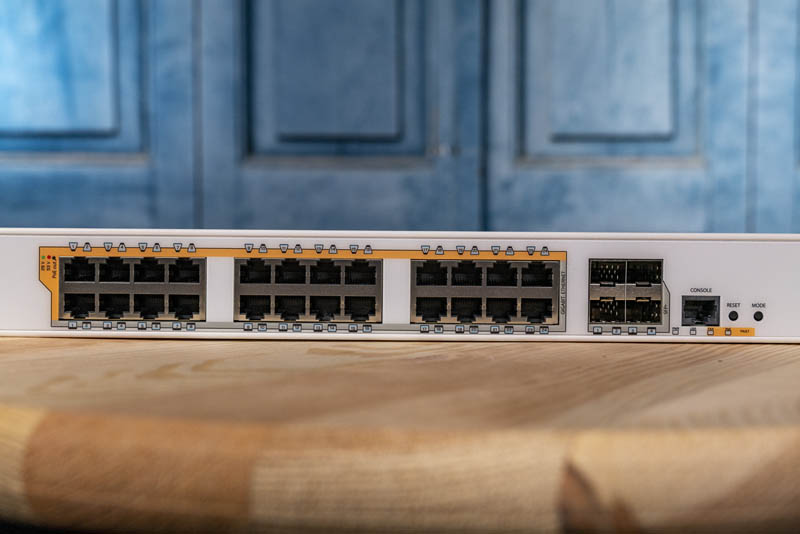
The other big headline feature is the high-speed networking. One gets four SFP+ 10GbE ports.
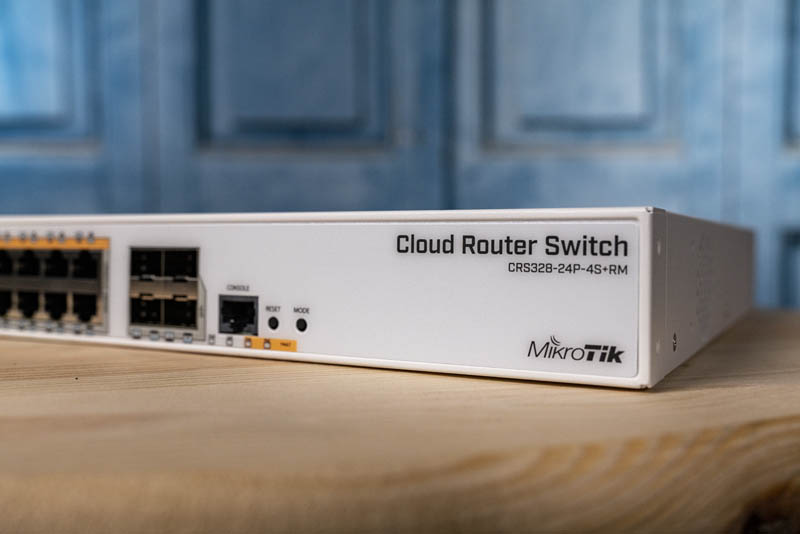
While there is a console port for management, this switch does not have the extra 1GbE port for management we are seeing on many of the newer CRS switches. We would have really liked to see that here as it would be a big differentiator for MikroTik.
On the rear of the switch, we see a single power input with a wire retention bracket to keep the power input cable locked into place. Otherwise, the rear is just sheet metal and screws.
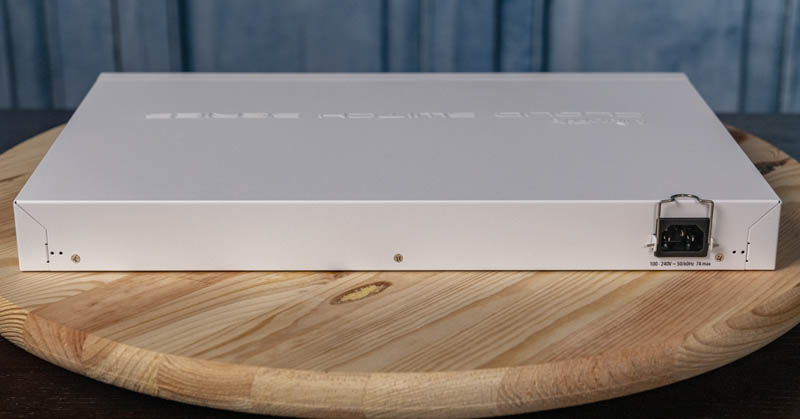
Unlike much of the CRS line, but like the PoE MikroTik CRS354-48P-4S+2Q+RM, this switch does not have redundant power inputs. This is common on lower-cost PoE switches. If you are accustomed to your CRS switches having redundant power, then this may seem different but as we will see the 500W internal PSU is already taking up so much of the chassis that there is unlikely room for a second one.
There are two holes for fan exhaust on either side of the chassis. One side has two fans installed, the other just has empty blanks for potentially adding fans but are currently being used as simple exhaust vents.
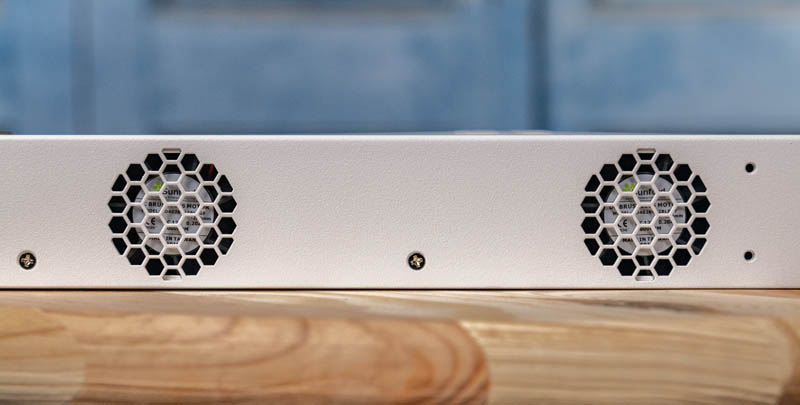
We do not normally delve into packaging, but like the CRS354’s, this switch comes with much nicer packaging than some of the other MikroTik switches. We have custom foam inserts here that help protect the switch during travel.
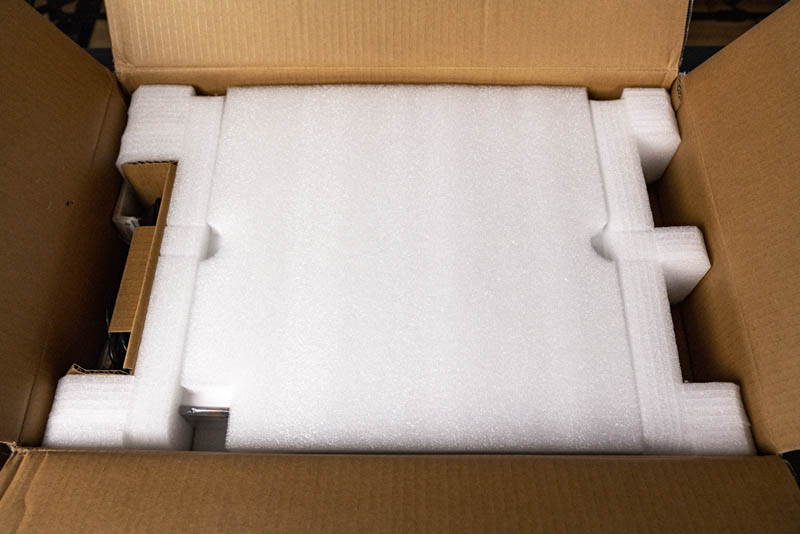
Also, as a fun fact, this switch actually came with rubber feet. If you were stacking this switch on a desk or the floor, then MikroTik has you covered. These were not mentioned on the spec sheet nor the product page, but they were in the box. One also gets rack ears, with the solution, but not rails which is common for this class of device.
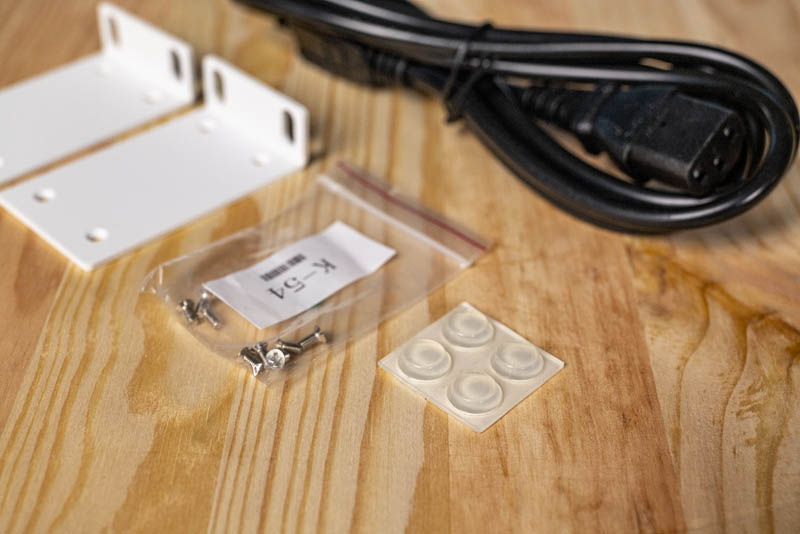
Before we move to the internal overview, we wanted to discuss an important use-case that MikroTik has been building over the past few years. Many of their lower-end switches such as the MikroTik CSS326-24G-2S+RM, MikroTik CRS326-24G-2S+RM, MikroTik CRS309-1G-8S+IN, and MikroTik CRS305-1G-4S+IN (which won one of four 2019 STH Editors Choice Awards) have a single internal PSU but also offer PoE power input. This CRS328-24P-4S+RM can power those switches either for redundancy or as their sole source of power.
Now, let us move to the internal overview.

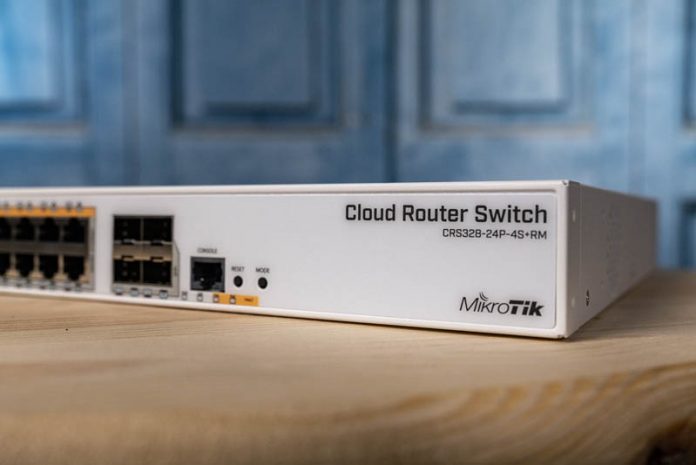



I have this switch. It idles at 25.8W. You’re saying it’s 25W. That’s too low.
You’re joking right? 0.8W is negligible. If they read 25.4 and rounded down to 25 that’s normal. Fan speeds based on temp and humidity can take half a watt delta too. That’s like no difference to me. Being within a watt is darn good.
I have this sucker + 2 MikroTik WAP’s. This switch is quirky at times, the management is a bit odd and not as clean as as a Sonicwall or a Meraki for Router features but still gets the job done. There is CLI but the web/RMON software works just fine.
Adding 2 WAP’s via the CAPSMAN built into the device makes setting up WAP’s a breeze if you follow the instructions on Mikrotik’s website. Don’t try to follow the manual, just use the web so you’ll need a system handy that has access to the web.
Then you have “The Dude” which allows graphing and Solarwindseque like displays of multiple devices which is very neat, this is also free and requires you download a package.
All in all for less than $500 i got a Router, PoE Switch, 10GB SFP’s, and 2 802.11AC WAP’s fully managed and controlled that would be 10x the price for any major vendor.
Wow, do those exhaust vents really have no grills on them? Seems like a disaster waiting to happen given the open-frame power supply inside and fingers or objects just waiting to go in those big open holes on the side.
Mine has punched grills on both sides. Not sure why STH’s don’t.
I wonder what revision they have as well, as I think there have different ones which have affected fan speed. Note that the version of routerOS definitely affects the fan speed with the later versions aiming for low speed at idle and better hysteresis so they don’t ramp up and down so much. ie. smooth ramp up and down
Dave – the grills are on the outer shell. You are looking at the inner shell portion.
That psu looks to be the same one that’s in the Ubiquiti US48-500w and just died due to a known fail defect where AC leaks onto the DC side through a FET.
Could we get closeups of the PSU?
Why wouldn’t you just buy that Ubiquiti US-48-500W
It’s got the same power. It’s got 2 SFP+ and 2 SFP. Both 24 port.
What’s the appeal of this over the Ubiquiti?
Odin, the Ubiquiti US-48-500W has 48 ports but is over twice the price.
The 24 port model only has SFP uplinks, no 10gb SFP+ and this has four of them.
You’d have to really like Ubiquiti to make that choice I think.
I think the problem for me with these is simply that you can get old enterprise gear (ie Cisco…) even cheaper second hand.
Right now it’s hard to say how long your budget Mikrotik switch will actually last, whereas it’s pretty established from my experience that Cisco gear can last a decade and perhaps more, especially if you have a spare modular power supply or two, perhaps a fan tray.
Looking at the warranty that Mikrotik offer, it’s only a year (perhaps two if you’re in the EU and no one screws you over)… that isn’t enough for me to feel confident that if I buy them I don’t have to worry about them for years – no one wants to be replacing failed switches.
Why are you afraid to replace a failed swicth ?
Thanks for the review! I have been researching for weeks for a switch that combines POE+ and 10 Gbps networking for a good price as i am quite budget constraint in these days.
Only after reading your review i feel confident enough to make that buying descision!
Thanks again!
After some practical tests, I am really disappointed regarding the 10G SFP+ ports.
I have to admit that I do not use transceivers from Mikrotik, but I tested all four SFP+ ports with six different transceivers. It looks like, I can only use two specific SFP+ ports. The other two just don’t get the link up although the transceivers show up in the management interface.
@ccb:
We use this switch at our company and we have 3 servers(2x Hyper-V & 1x FREENAS-server) connected to it using cheap ebay-bought SFP+ Copper cables with built-in transceivers(Cisco-branded, don’t have the SKU availiable atm). Works just fine for us.
If you only buy this switch and don’t intend buying a router: warning.
If you use VLANs to segregate L2, you will probably enable a DHCP server in some or all VLANs. Doing this will require you to add an vlan interface for each VLAN, giving an IP to it.
As soon as you do this, the switch starts to do interVLAN routing.
So you will want to do L3 filtering to restrict what can pass between VLANs and what cannot.
But this switch doesn’t support the “Fast Track” feature, and the CPU is very small.
It has L3 hardware offload, but what’s the point in routing if you cannot filter anything?
Also, on my side, as soon as I enabled L3 hardware offload with RouterOS 7.6, the switch became very unstable.
It ended up with an uncontrolled reboot loop and I had to reset everything.
I would only recommending this switch if:
– You need PoE
– You use VLANs but have another router device to route between VLANs and to create IP services (DHCP, DNS)
– Or if you don’t use VLANs.
Mine broke down in less than years, completely dead. Like the PSU issues some mentioned above. I would not recommend this unless you really need the features. Its nice to have all the software features, but not when the hardware is not reliable at all.
I replaced it with what was originally there, an old 3560G – good ole workhorse.
Been running this since Jan of 2021. It’s been flawless, with 4 cameras and 2 Access points being powered along with the rest of the gig ports populated and 3 of the 4 SFP+ ports in use since day 1. It’s been a good purchase.